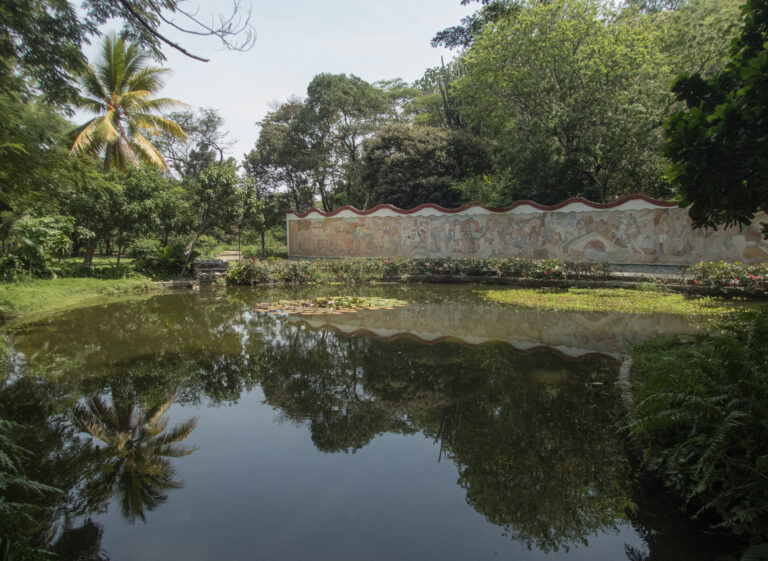To Bogota via Bucaramanga
The Journey
To enjoy the countryside during daylight hours from Mompox to Bogota, I broke the journey in Bucaramanga. The first couple of hours outside of Mompox gave an excellent opportunity to see the expanse of wetlands that I had missed when I arrived at night. There are cranes wading everywhere!
Once back on Highway 45 (from Santa Marta) the surrounding lowland becomes drier with shrub forest and large areas cleared for plantations. The lower Sierra Navada in the distance also showed signs of deforestation.
A comfortable central hotel in Bucaramanga, a good night’s sleep, and off to Bogota. The climb out of Bucaramanga soon brought us into the Andean range – much of it deforested. The houses are more sturdily built in this area to cope with the cool mountain weather. A great sight on the journey was a line of ten vultures sitting spaced out along individual fence poles.

It had been a long day and the queues entering Bogota were barely moving. I had chosen to stay in a hotel in a residential area about 50 minutes taxi ride from the city centre. As the traffic was at a standstill, I took the opportunity to save myself a couple of hours waiting in the rush hour and jumped off the bus roughly where my hotel should be. My GPS worked and I was soon taking it easy. The area of Santa Barbara is peaceful and safe, and I felt comfortable walking into the main shopping area to eat each evening.
Bogota
Bogota lies at over 2600 metres above sea level. It is a large sprawling city with a population of over seven million. The charm and heart of the city is in its old quarters, La Candelaria. It is crammed with colourful old buildings, important historic monuments, and has a vibrant feel to it.


Normally when going to an unfamiliar city, I opt for checking out maps and researching what to visit. It helps to orientate me, remember the main areas of the city, and get a feeling for the place. In Bogota, I also decided to try a “free walking tour” – donations gratefully received. It is ideal for anyone with limited time, and it was very informative and gave a good insight into the modern and troubled history of Colombia.


A lesser visited but important part of Colombian history is the house and garden of the Quinta de Bolivar. It is where Bolivar lived for periods of time before and after the war of independence. It contains many examples of his personal items, and is well-maintained.

The Museum of Gold
Arguably, the two most important pre-Colombian collections of gold artefacts are in Lima and Bogota. I have been fortunate to visit both, and The Museum of Gold in Bogota made such an impression that I went back for a second visit. When the museum is close to full, the area with the largest collection of artefacts is shut off.







